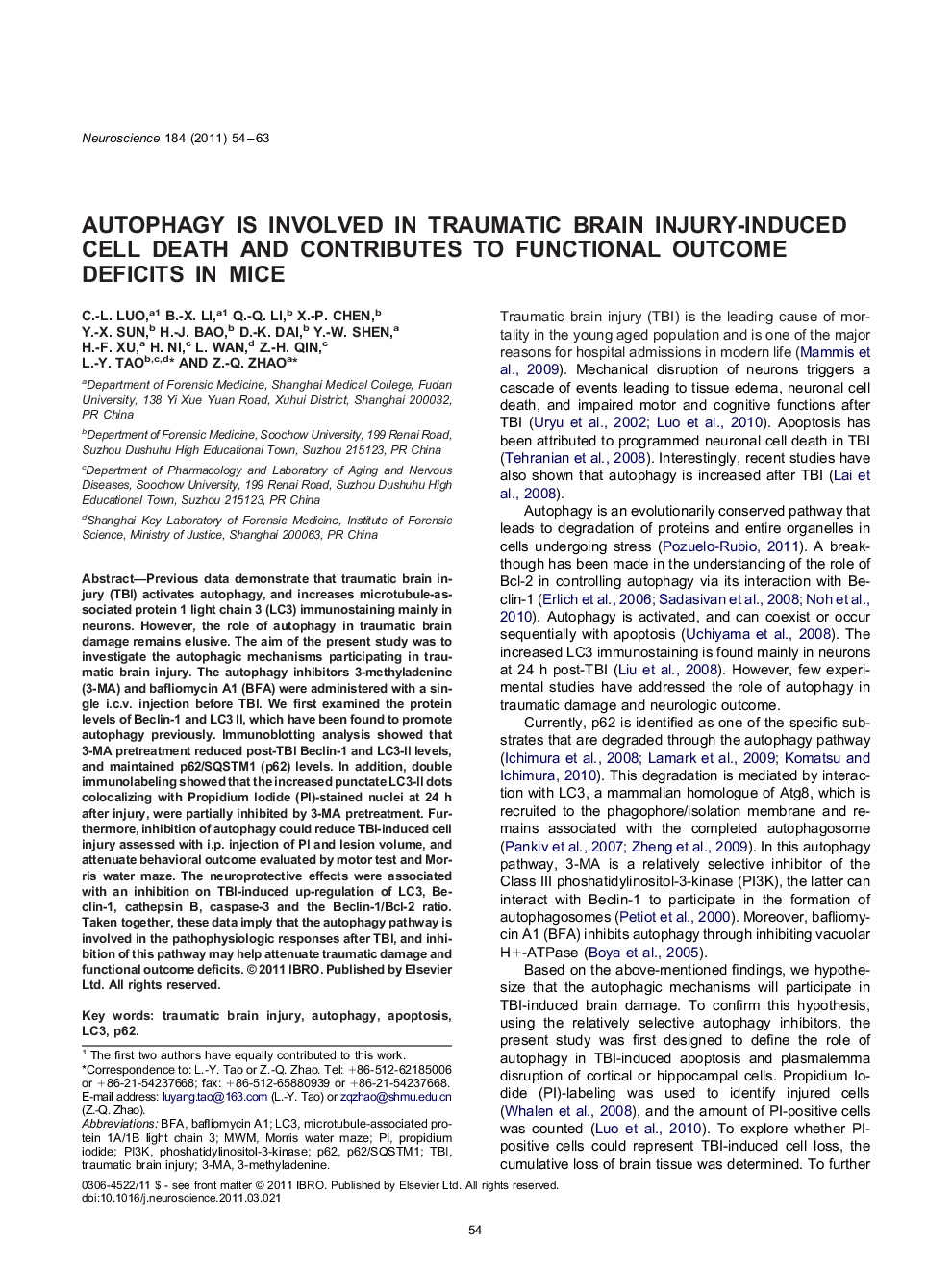| Article ID | Journal | Published Year | Pages | File Type |
|---|---|---|---|---|
| 4338847 | Neuroscience | 2011 | 10 Pages |
Previous data demonstrate that traumatic brain injury (TBI) activates autophagy, and increases microtubule-associated protein 1 light chain 3 (LC3) immunostaining mainly in neurons. However, the role of autophagy in traumatic brain damage remains elusive. The aim of the present study was to investigate the autophagic mechanisms participating in traumatic brain injury. The autophagy inhibitors 3-methyladenine (3-MA) and bafliomycin A1 (BFA) were administered with a single i.c.v. injection before TBI. We first examined the protein levels of Beclin-1 and LC3 II, which have been found to promote autophagy previously. Immunoblotting analysis showed that 3-MA pretreatment reduced post-TBI Beclin-1 and LC3-II levels, and maintained p62/SQSTM1 (p62) levels. In addition, double immunolabeling showed that the increased punctate LC3-II dots colocalizing with Propidium Iodide (PI)-stained nuclei at 24 h after injury, were partially inhibited by 3-MA pretreatment. Furthermore, inhibition of autophagy could reduce TBI-induced cell injury assessed with i.p. injection of PI and lesion volume, and attenuate behavioral outcome evaluated by motor test and Morris water maze. The neuroprotective effects were associated with an inhibition on TBI-induced up-regulation of LC3, Beclin-1, cathepsin B, caspase-3 and the Beclin-1/Bcl-2 ratio. Taken together, these data imply that the autophagy pathway is involved in the pathophysiologic responses after TBI, and inhibition of this pathway may help attenuate traumatic damage and functional outcome deficits.
▶3-MA pretreatment prevents the post-TBI Beclin-1 and LC3-II activation, and maintains p62 levels. ▶Increased punctate LC3 dots colocalizing with PI-stained nuclei post-TBI are inhibited by 3-MA. ▶Inhibition of autophagy attenuates TBI-induced brain damage and functional outcome deficits. ▶3-MA pretreatment reduces TBI-induced cathepsin B activation and cell apoptosis. ▶3-MA reverses TBI-induced effects on the Bcl-2/Bax ratio, and the Beclin-1/Bcl-2 ratio.
